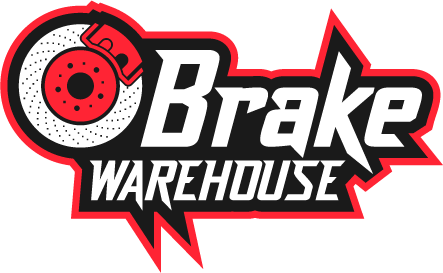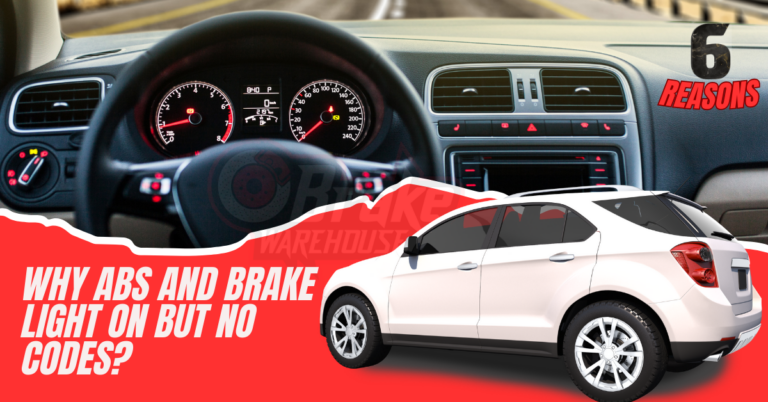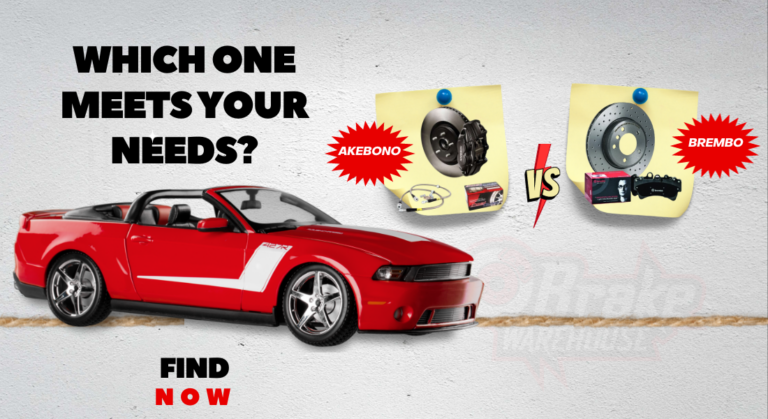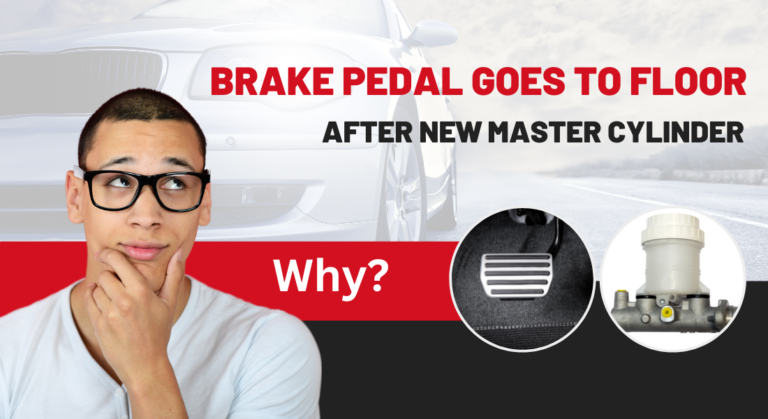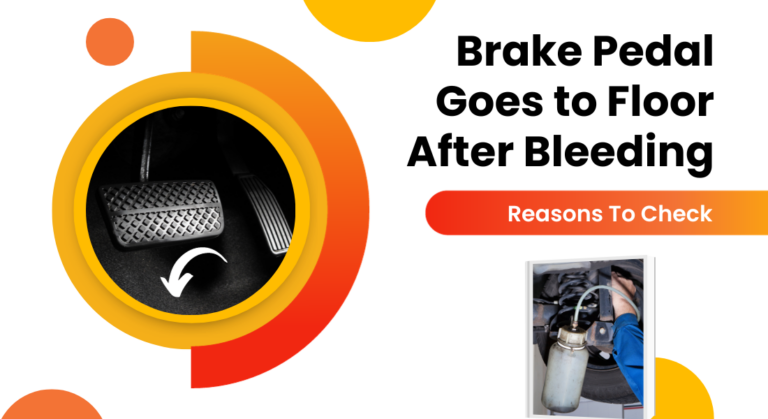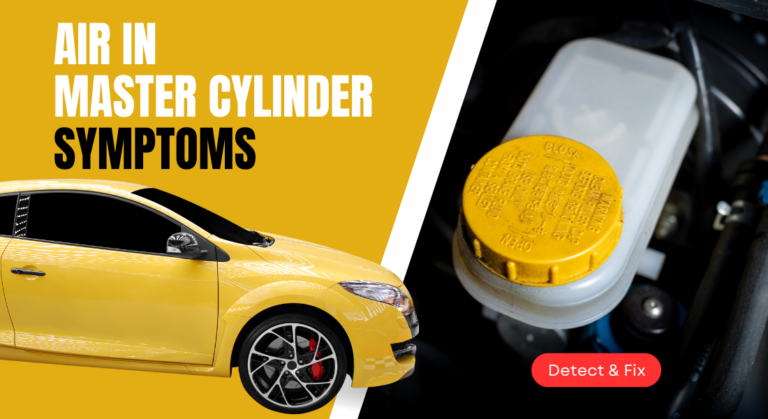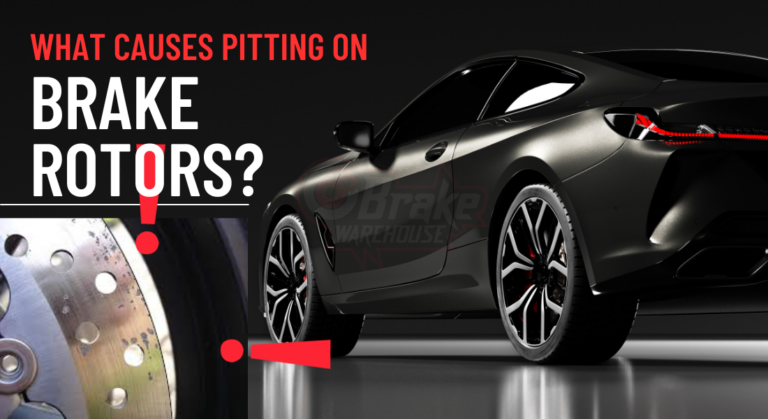Both Front Brake Calipers Not Releasing – Why & How To Fix?
In the car’s braking system, the caliper helps to press the pads onto the rotor and slow down the car. But sometimes, the caliper may malfunction and won’t disengage. You better address this issue quickly, as it may cause further damage to the braking system.
You may find symptoms like poor fuel economy, excessive vibration, overheating, burnt smell, or smoke coming out from the wheel. Besides, the car may pull on one side and slow down due to both front brake calipers not releasing issues.
In this article, we will discuss symptoms, causes, and solutions of locked-up front brake calipers. So, if you are also facing this issue while driving or braking, tag along till the end.
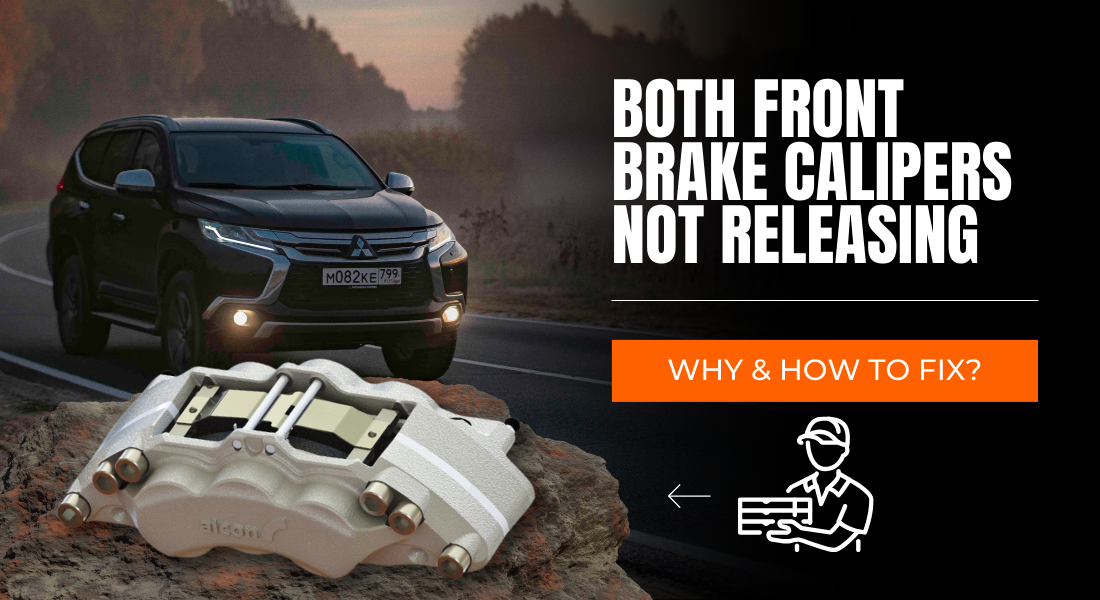
Why Are Both Front Brake Callipers Not Releasing – How To Fix?
Generally, both front brake calipers won’t disengage due to reasons like:
- Lack of lubrication
- Problematic brake caliper pistons
- Rapid temperature changes
- Worn-out brake hose
- Caliper misalignment
- Bent brake disc
- Damaged master cylinder
Let’s know about these causes and ways to fix them in detail:
1. Lack Of Lubrication
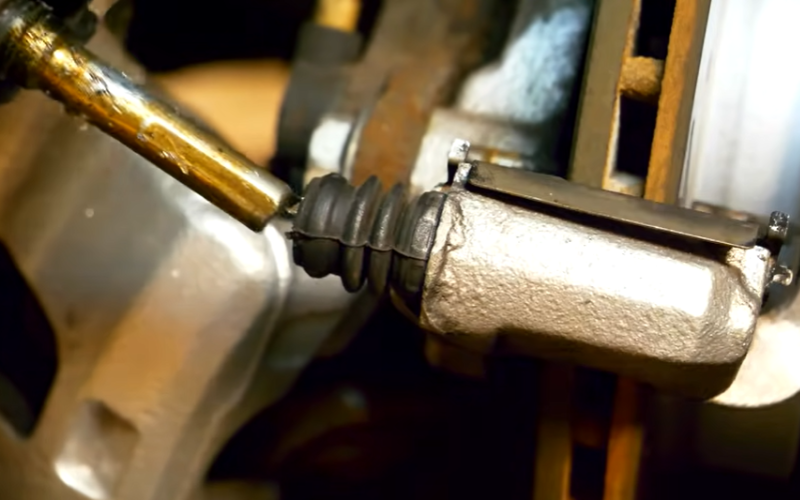
Lack of lubrication may increase the friction between the brake components over time. Also, the caliper slide pins or bushings may become frozen up. Besides, this will be responsible for sticking the brake pads.
Moreover, dirt and debris accumulation on moving components of floating calipers can also cause failure in disengaging brakes.
Solutions
To solve this issue, you need to clean the brake caliper or need to lubricate the brake components. Follow these steps:
- Step 1: You need to remove the car wheel after jacking up the car.
- Step 2: Take a ring spanner and pull out the caliper bolts.
- Step 3: Remove the caliper, and clean it using a wire brush. Then, use a white cord to hang it.
- Step 4: Detach retaining clips or pins to take out the brake pad from the caliper.
- Step 5: You must apply a thin, uniform layer of grease or lubricant to the back of the brake pads. Use high-temperature silicone-based lubricant(our recommendation). This type of lube can serve sufficient lubrication even in high temperatures and pressure.
This image indicates the places where you need to apply grease for lubrication. Generally, instead of applying lubricant on the front of the pads, apply it to lubricate on caliper areas that come into contact with brake pads.
- Step 6: Now follow all the steps in reverse sequence to attach the wheel again.
2. Problematic Brake Piston
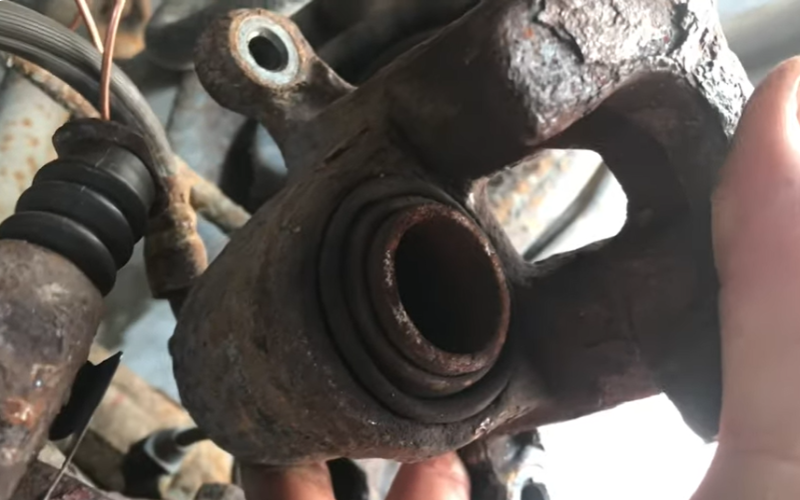
Due to excessive corrosion, the brake piston may start to malfunction. It can even reduce the brake fluid level which will cause a lack of lubrication.
Thus, the brake caliper will also start to malfunction due to the increased frictional effect. Besides, the brake piston will also stick resulting in failure in the disengaging of the brake calipers.
Solution
To solve this issue, you need to replace the brake piston. Follow these steps for that:
- Step 1: Remove the brake pads that are in contact with the caliper pistons.
- Step 2: Take out the caliper pistons and then clean the brake caliper and pads appropriately.
- Step 3: If the old brake pistons are problematic, install new ones following the removal process in reverse.
- Step 4: After the replacement process, bleed the brake system.
3. Rapid Temperature Change
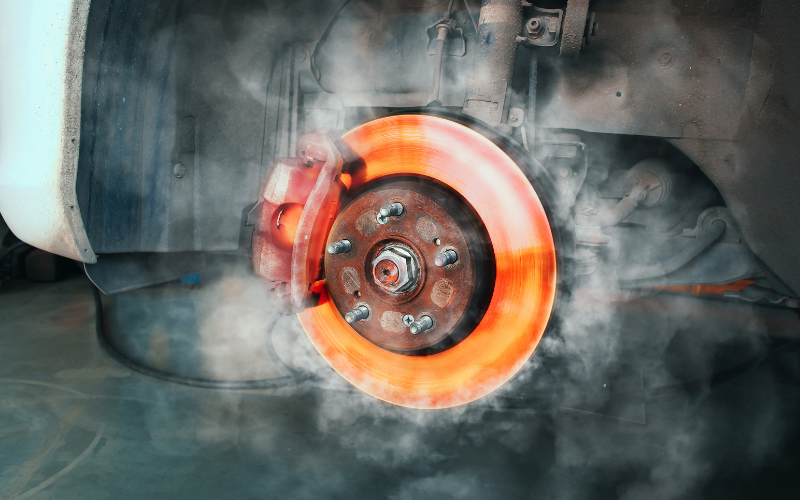
Normally, brake calipers can get as hot as 392°F. But, in local driving tracks or while off-road driving, the calipers may get hot over 1000°F.
Besides, the rapid changes in caliper temperature while accelerating and decelerating will be responsible for cracking the calipers. This will cause the seizing of brake calipers and the issue of failure in disengaging.
Solution
Follow these steps to replace cracked brake calipers:
- Step 1: After removing the tires, you need to use brake caliper tools. Use the tools to unscrew the mounting bolts on the brake calipers.
- Step 2: Take out the brake calipers from the rotors.
- Step 3: Install new brake calipers and mount the bolts with appropriate torque.
- Step 4: After reattaching the tires, you need to bleed the brake system.
4. Worn Out Brake Hose
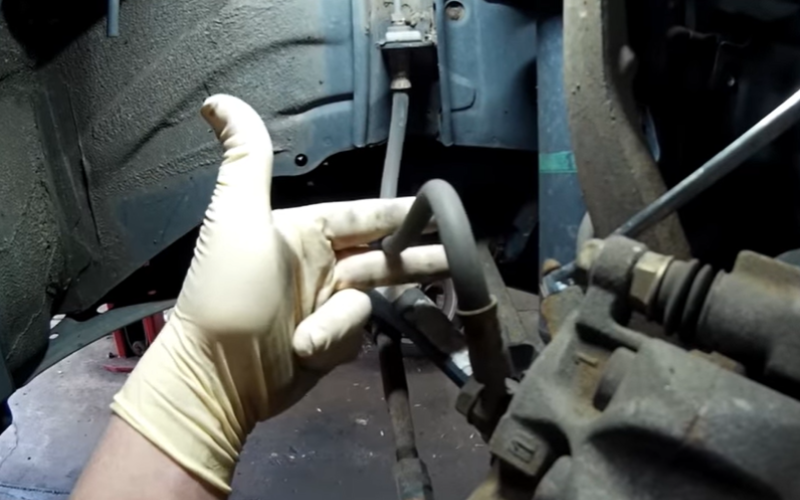
When the brake hose gets damaged over time, it may cause leakages. As a result, the transmission fluid level of your car will also decrease.
Eventually, this will increase the friction and restrict the brakes’ backward and forward movement on the wheel.
Solution
If the brake hose line gets damaged, you must replace it with a new one. Thus, follow these steps:
- Step 1: Jack up the car, then you can remove the wheel to create enough room for your movement.
- Step 2: Use an appropriate wrench to lose the fasteners on both ends of the hose.
- Step 3: Remove the end which is connected to the caliper, then the other end.
- Step 4: Install the new hose shortly after removing the old one.
- Step 5: Refill the brake fluid tank till the appropriate level, then bleed the brake to remove air from the hose.
5. Caliper Misalignment
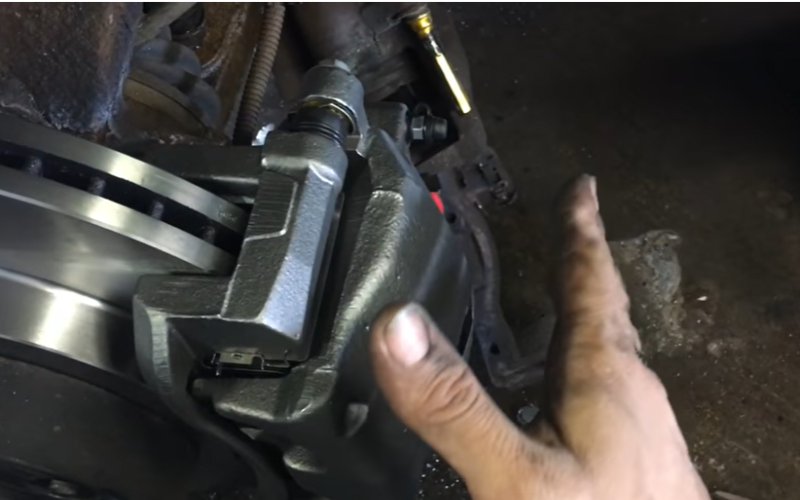
If the caliper is not in appropriate alignment, it will apply uneven pressure on the brake pads. As a result, the disengaging will also be poor.
Alongside, unpleasant noise and overheating issues will also start to show up.
Solution
To align the calipers, follow these steps:
- Step 1: Locate the caliper bolts and loosen them using a wrench.
- Step 2: Align the caliper appropriately with the rotor position.
- Step 3: According to appropriate torque specifications, tighten those bolts again.
- Step 4: Manually spin the rotor to ensure there is no excessive drag between the brake rotor and pads.
To visualize the process of aligning the caliper, you can check this YouTube video:
6. Bent Brake Disc
The brake disc may bend due to excessive friction between the rotor and pads. Generally, when the brake doesn’t disengage due to this reason, a loud noise will come out upon pressing the brake pedal.
Solutions
Usually, resurfacing or replacing the brake disk is the fix in this regard.
- After removing the brake pads, you need to unscrew the screws on the brake disc. If you can’t find any, remove the brake disk using a hammer. Then, install a new one following the reverse process.
- Instead of replacing it, you can also resurface the old disc if it’s not excessively thin.
7. Blocked Master Cylinder
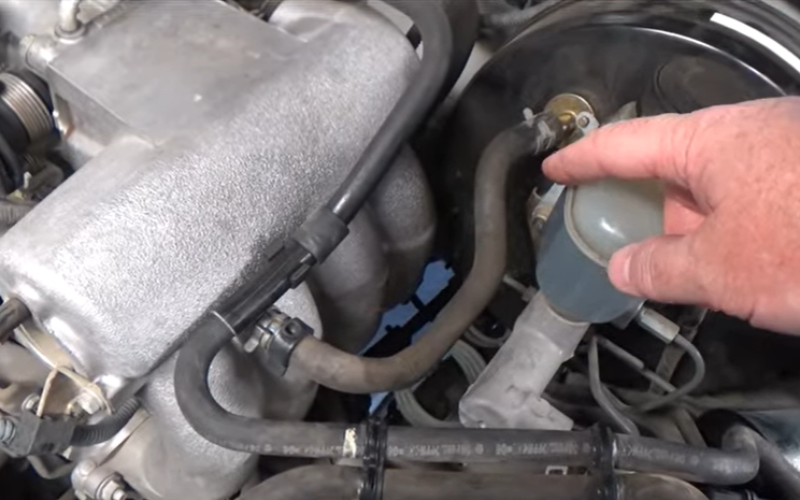
The brake fluid can get contaminated over time, which may block the master cylinder. Then, the fluid won’t come back to the master cylinder from the disc brake. This will cause failure in disengaging brakes.
Solution
You need to bleed the cylinder to solve this issue. Here are the steps:
- Step 1: Open the car’s bonnet, locate the master cylinder, and take out its cap.
- Step 2: Add the appropriate fluid into the cylinder if the fluid level is low.
- Step 3: You must bleed the brake, which is at the farthest distance from the master cylinder.
- Step 4: Find the caliper’s bleeder screw and fit a clear plastic hose to the valve. Another end will be on the collection pan.
- Step 5: When the assistant presses on the brake pedal, open the bleeder screw until the pedal is close to the floor.
- Step 6: Close the valve when the assistant releases the pedal. Follow these steps until bubble-free and free fluid don’t come out. Close the valve before your helper releases the brake pedal.
Step 7: Follow the same process for other wheels.
FAQs
This FAQs section will answer a few questions about the stuck front brake calipers. Keep reading.
How Often Should I Replace the Brake Calipers Of My Car?
Generally, brake calipers can last up to 75,000-100,000 miles. That means you may need to replace the calipers once every 10 years. Depending on your driving style or road condition, you may need to replace it sooner or later.
How Much Does It Cost To Replace Front Brake Calipers?
The price of calipers will be around $579-$694. For installation, you may need to pay an extra $121-$153 for labor. But you can save this extra cost if you can replace it yourself.
Can I Drive With Stuck Brake Calipers?
Though you can drive with stuck brake calipers, we never recommend doing so. Because if you keep driving, the brake will always be in an engaged position. This may cause additional stress on the brake and transmission system failing that system.
Conclusion
Lack of lubrication, damaged brake hose, and misaligned calipers are primarily responsible for both front brake calipers not releasing. Alongside, bent brake discs, and blocked master cylinders are also responsible for this issue.
Normally, you will notice symptoms like vibration, grunting noise, overheating or wheels, smoke, unbalanced car, etc. We already discussed the fix for respective causes, which you must follow accordingly. Still, if you can’t fix the stuck caliper issue, seek help from a professional.

Meet Zayan, the mechanical genius behind the highly acclaimed brakes problems and solutions website. With over a decade of hands-on experience in the automotive industry, Zayan has become a trusted authority in the realm of brake systems.
His passion for cars, coupled with his expertise in solving complex brake-related issues, has earned him a devoted following of car enthusiasts, mechanics, and everyday drivers seeking reliable guidance.
